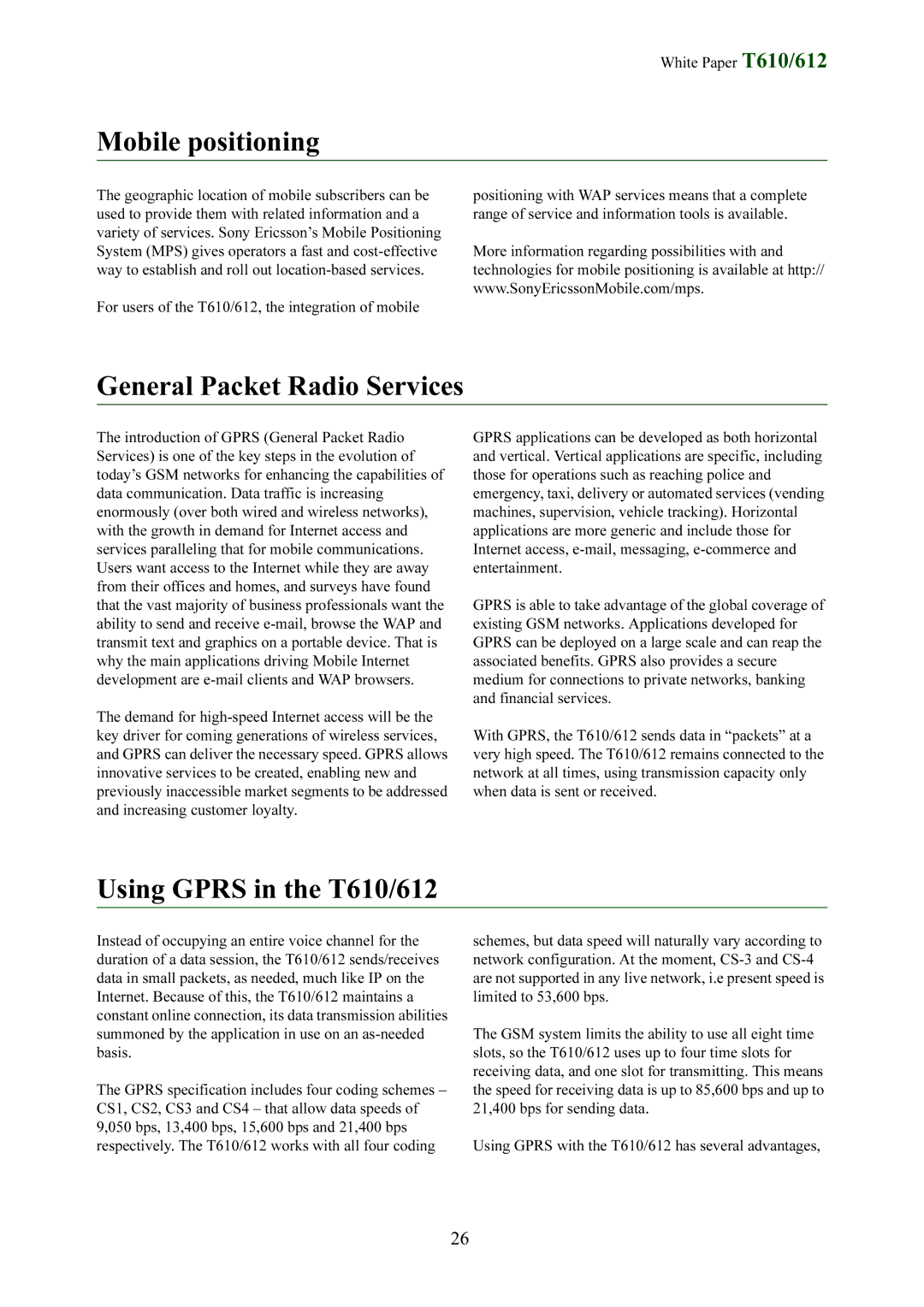
White Paper T610/612
Mobile positioning
The geographic location of mobile subscribers can be used to provide them with related information and a variety of services. Sony Ericsson’s Mobile Positioning System (MPS) gives operators a fast and
For users of the T610/612, the integration of mobile
positioning with WAP services means that a complete range of service and information tools is available.
More information regarding possibilities with and technologies for mobile positioning is available at http:// www.SonyEricssonMobile.com/mps.
General Packet Radio Services
The introduction of GPRS (General Packet Radio Services) is one of the key steps in the evolution of today’s GSM networks for enhancing the capabilities of data communication. Data traffic is increasing enormously (over both wired and wireless networks), with the growth in demand for Internet access and services paralleling that for mobile communications. Users want access to the Internet while they are away from their offices and homes, and surveys have found that the vast majority of business professionals want the ability to send and receive
The demand for
GPRS applications can be developed as both horizontal and vertical. Vertical applications are specific, including those for operations such as reaching police and emergency, taxi, delivery or automated services (vending machines, supervision, vehicle tracking). Horizontal applications are more generic and include those for Internet access,
GPRS is able to take advantage of the global coverage of existing GSM networks. Applications developed for GPRS can be deployed on a large scale and can reap the associated benefits. GPRS also provides a secure medium for connections to private networks, banking and financial services.
With GPRS, the T610/612 sends data in “packets” at a very high speed. The T610/612 remains connected to the network at all times, using transmission capacity only when data is sent or received.
Using GPRS in the T610/612
Instead of occupying an entire voice channel for the duration of a data session, the T610/612 sends/receives data in small packets, as needed, much like IP on the Internet. Because of this, the T610/612 maintains a constant online connection, its data transmission abilities summoned by the application in use on an
The GPRS specification includes four coding schemes – CS1, CS2, CS3 and CS4 – that allow data speeds of 9,050 bps, 13,400 bps, 15,600 bps and 21,400 bps respectively. The T610/612 works with all four coding
schemes, but data speed will naturally vary according to network configuration. At the moment,
The GSM system limits the ability to use all eight time slots, so the T610/612 uses up to four time slots for receiving data, and one slot for transmitting. This means the speed for receiving data is up to 85,600 bps and up to 21,400 bps for sending data.
Using GPRS with the T610/612 has several advantages,
26
